前端框架-element-ui message 组件源码分享
推荐 原创文章分类 其他 前端框架 前端 vue.js javascript ecmascript 阅读数 : 158 阅读时长 : 9分钟
今日简单分享 message 组件的源码,主要从以下四个方面来分享:
1、message 组件的页面结构
2、message 组件的 options 配置
3、mesage 组件的方法
4、个人总结
一、message 组件的页面结构

二、message 组件的 options 配置
前置说明:message 并没有注册到 Vue 实例上,而是创建了一个构造函数,并将其添加到 Vue 的原型链上,可在任何一个 Vue 组件内部通过 this.$message 的方式访问。
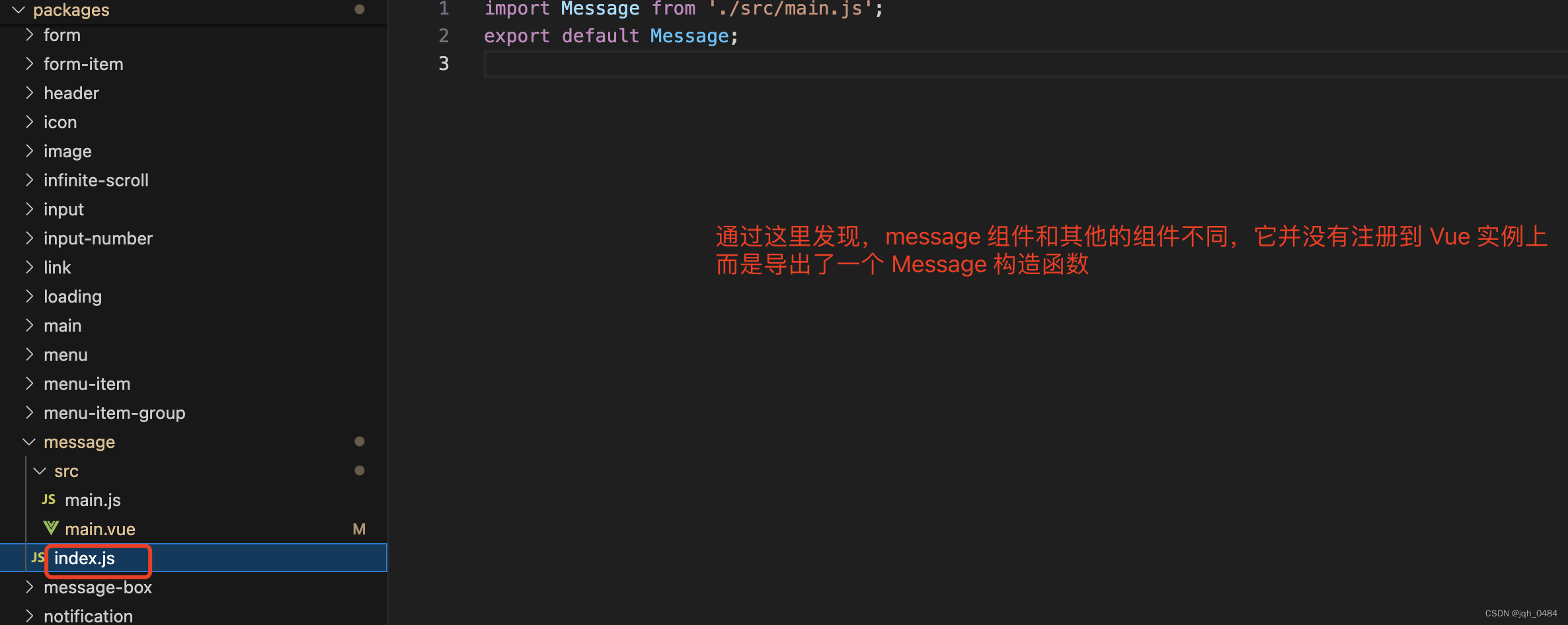

main.js 代码位置:
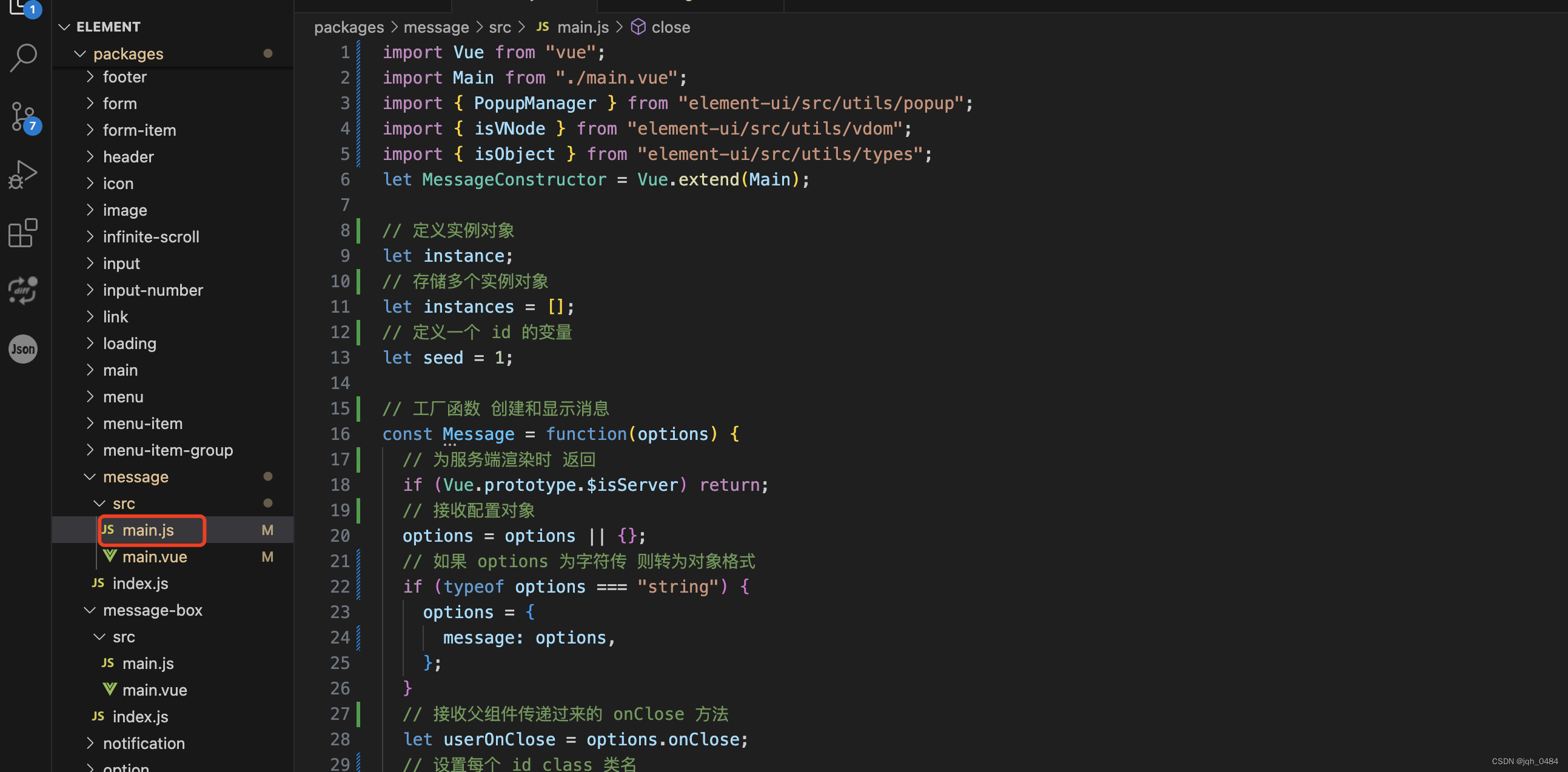
main.js 的代码讲解,主要有三个功能功能:
- 将 Message 实例化,并挂载到 body 中。
- 处理一个页面多个实例对象的情况。如果一个页面多个实例对象,使用数组的方式存储,并改变每个实例对象垂直方向的偏移量。
- 关闭的事件回调。处理当页面有多个实例对象时,关闭 Message 时,移除当前实例对象额高度,并调整其他实例对象的高度。设置关闭后的回调函数。
import Vue from "vue";
import Main from "./main.vue";
import { PopupManager } from "element-ui/src/utils/popup";
import { isVNode } from "element-ui/src/utils/vdom";
import { isObject } from "element-ui/src/utils/types";
let MessageConstructor = Vue.extend(Main);
// 定义实例对象
let instance;
// 存储多个实例对象
let instances = [];
// 定义一个 id 的变量
let seed = 1;
// 工厂函数 创建和显示消息
const Message = function(options) {
// 为服务端渲染时 返回
if (Vue.prototype.$isServer) return;
// 接收配置对象
options = options || {};
// 如果 options 为字符传 则转为对象格式
if (typeof options === "string") {
options = {
message: options,
};
}
// 接收父组件传递过来的 onClose 方法
let userOnClose = options.onClose;
// 设置每个 id class 类名
let id = "message_" + seed++;
// 关闭的函数,调用 Message 的 close 方法
options.onClose = function() {
// 父组件调用实例对象中的关闭方法
Message.close(id, userOnClose);
};
// 创建新的 Vue实例对象 MessageConstructor,并将其赋值给 instace 变量
instance = new MessageConstructor({
data: options,
});
// 设置当前实例的 id 值,此 id 作为当前实例的唯一标识
instance.id = id;
// 如果是虚拟dom
if (isVNode(instance.message)) {
instance.$slots.default = [instance.message];
instance.message = null;
}
// 将 instance 这个 Vue 实例挂载到 $el 属性所引用的 dom 元素上
instance.$mount();
// 将 dom 元素添加到 body 中
document.body.appendChild(instance.$el);
// 设置垂直方向的偏移量
let verticalOffset = options.offset || 20;
// 遍历实例对象数组,并将每个实例对象的高度增加 16,作用是计算每个实例对象垂直方向的偏移量
instances.forEach((item) => {
verticalOffset += item.$el.offsetHeight + 16;
});
// 设置当前实例对象垂直方向的偏移量
instance.verticalOffset = verticalOffset;
// 设置当前实例对象可见,即 Main 组件可见
instance.visible = true;
// 设置当前实例的层级,如果页面上有 n 个实例对象,每点击一次 zIndex 就增加 n
// 作用是保证每次新弹出的 message 弹框都在上次的 message 弹出层之上
instance.$el.style.zIndex = PopupManager.nextZIndex();
// 将当前实例对象存到实例对象数组当中
instances.push(instance);
// 返回当前实例对象
return instance;
};
["success", "warning", "info", "error"].forEach((type) => {
Message[type] = (options) => {
if (isObject(options) && !isVNode(options)) {
return Message({
...options,
type,
});
}
return Message({
type,
message: options,
});
};
});
// Message 定义 close 关闭方法,传入两个参数,当前实例对象的 id 和 onClose 方法
// id 为一个带有 id 参数的 className 类名
// userOnClose 为父组件传递过来的 onClose 方法
Message.close = function(id, userOnClose) {
let len = instances.length;
let index = -1;
let removedHeight;
for (let i = 0; i < len; i++) {
// 关闭的当前实例对象的 id 等于实例对象组中的 id,则获取垂直方向的偏移量,并更新当前的索引
if (id === instances[i].id) {
removedHeight = instances[i].$el.offsetHeight;
index = i;
// 如果父组件传递过来的 onClose 是一个回调函数,则将当前实例对象回传给父组件
if (typeof userOnClose === "function") {
userOnClose(instances[i]);
}
// 删除实例对象组中的当前实例
instances.splice(i, 1);
break;
}
}
// 如果页面无 instance 实例对象,返回
if (len <= 1 || index === -1 || index > instances.length - 1) return;
// 将当前实例对象后面的实例对象的垂直方向的偏移量的高度上移
for (let i = index; i < len - 1; i++) {
let dom = instances[i].$el;
dom.style["top"] =
parseInt(dom.style["top"], 10) - removedHeight - 16 + "px";
}
};
// closeAll 关闭所有实例对象
Message.closeAll = function () {
for (let i = instances.length - 1; i >= 0; i--) {
// 关闭当前实例对象
instances[i].close();
}
};
export default Message;
isNode 方法:

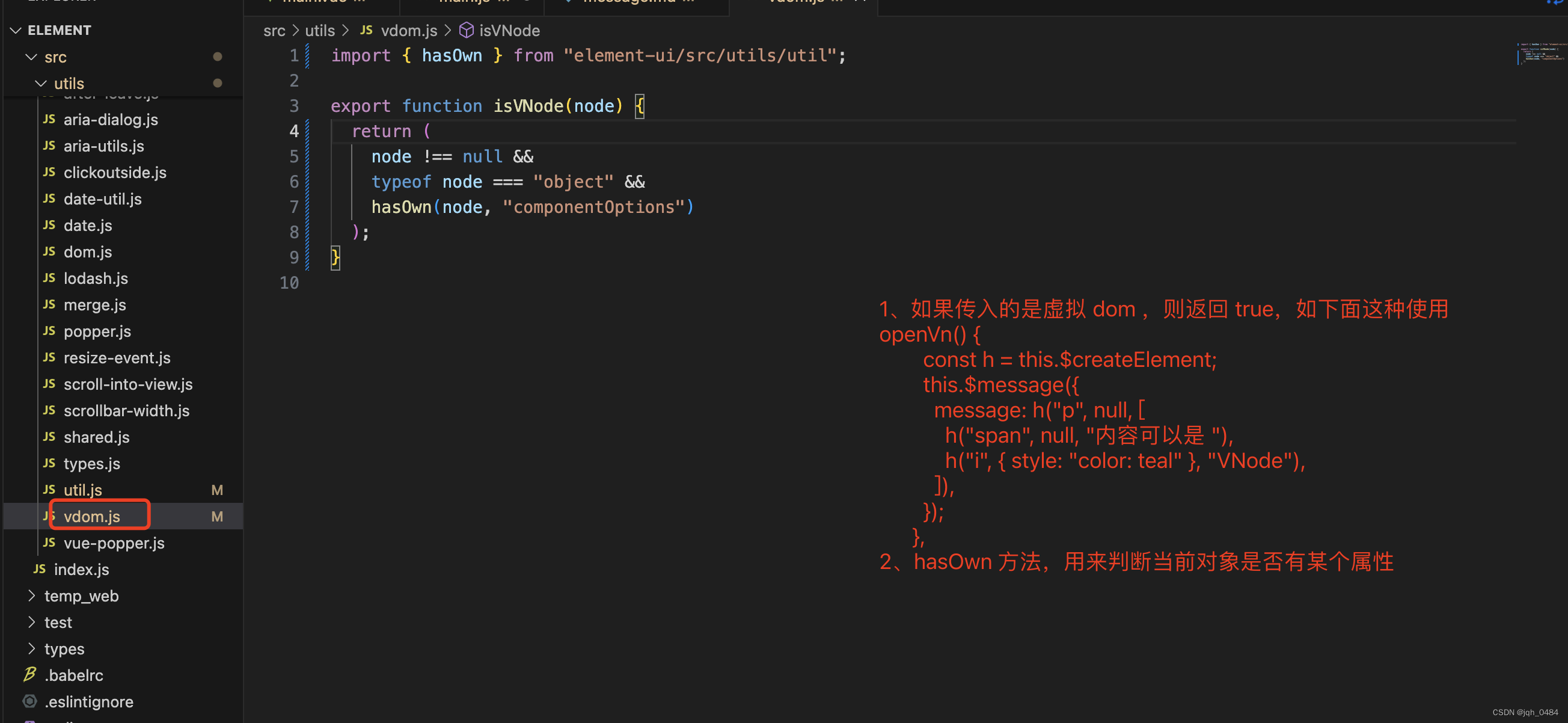

2.1 message 属性,消息文字,类型 string / VNode,无默认值。


2.2 type 属性,主题,类型 string,success/warning/info/error,默认 info。


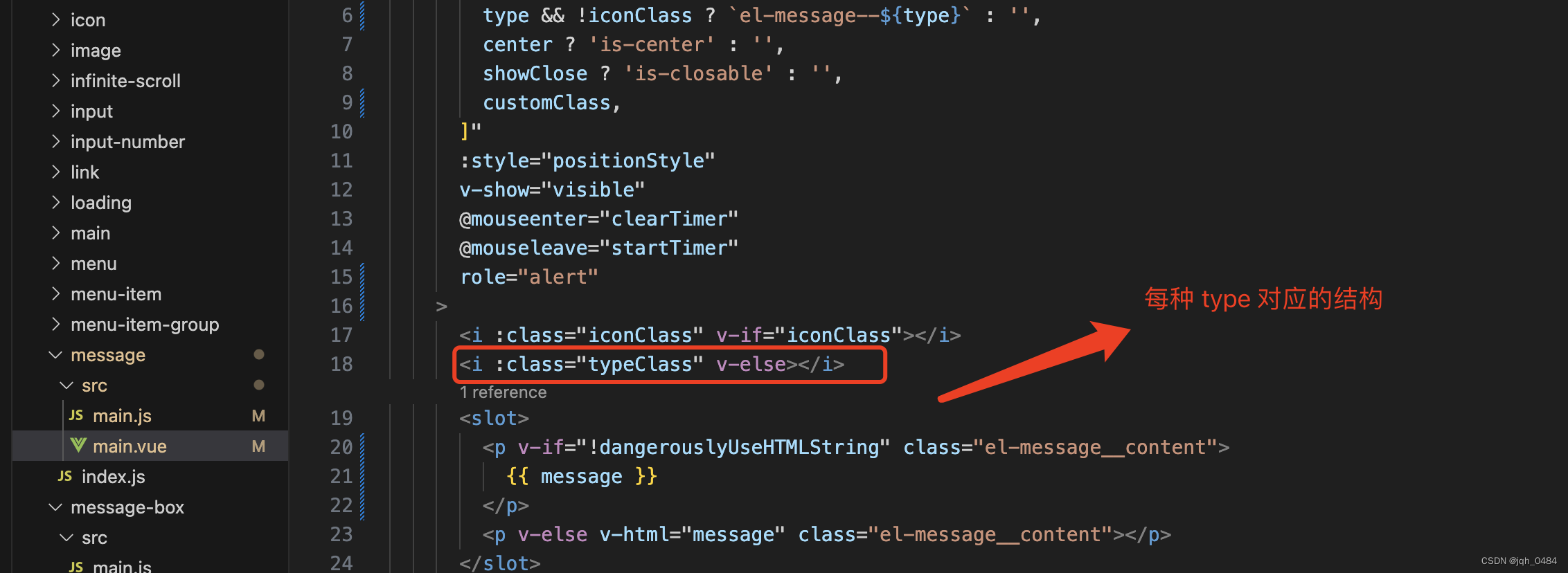
2.3 iconClass 属性,自定义图标的类名,会覆盖 type,类型 string,无默认值。


2.4 dangerouslyUseHTMLString 属性,是否将 message 属性作为 HTML 片段处理,类型 boolean,默认 false。


2.5 customClass 属性,自定义类名,类型 string,无默认值。
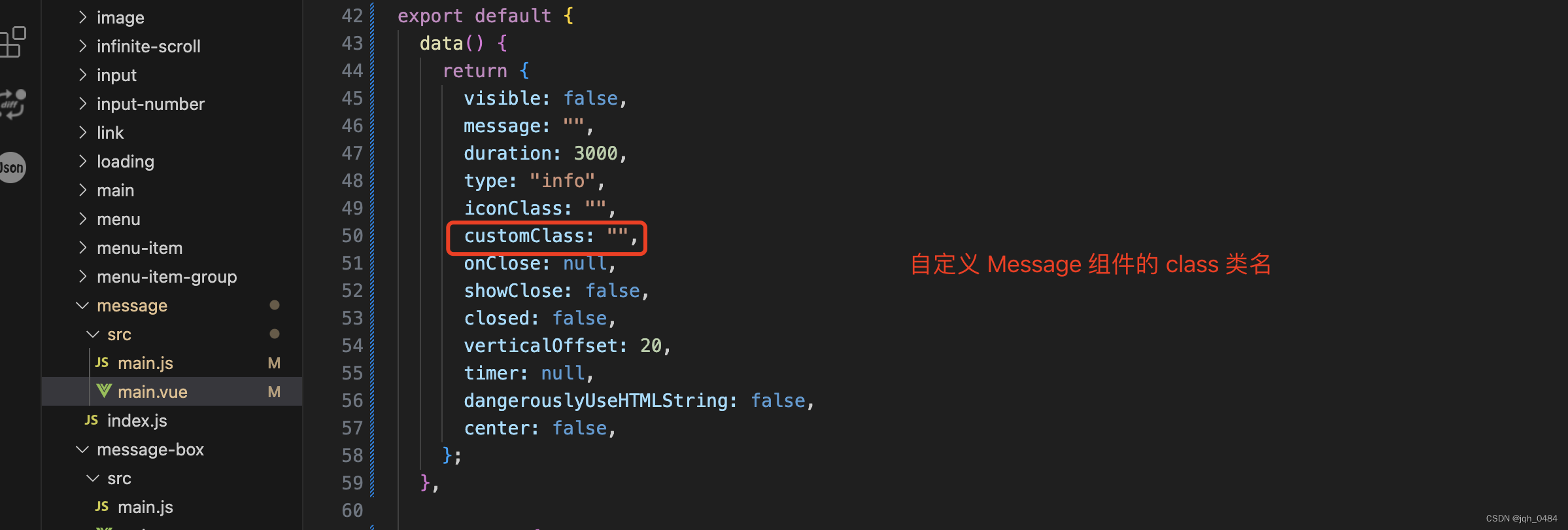
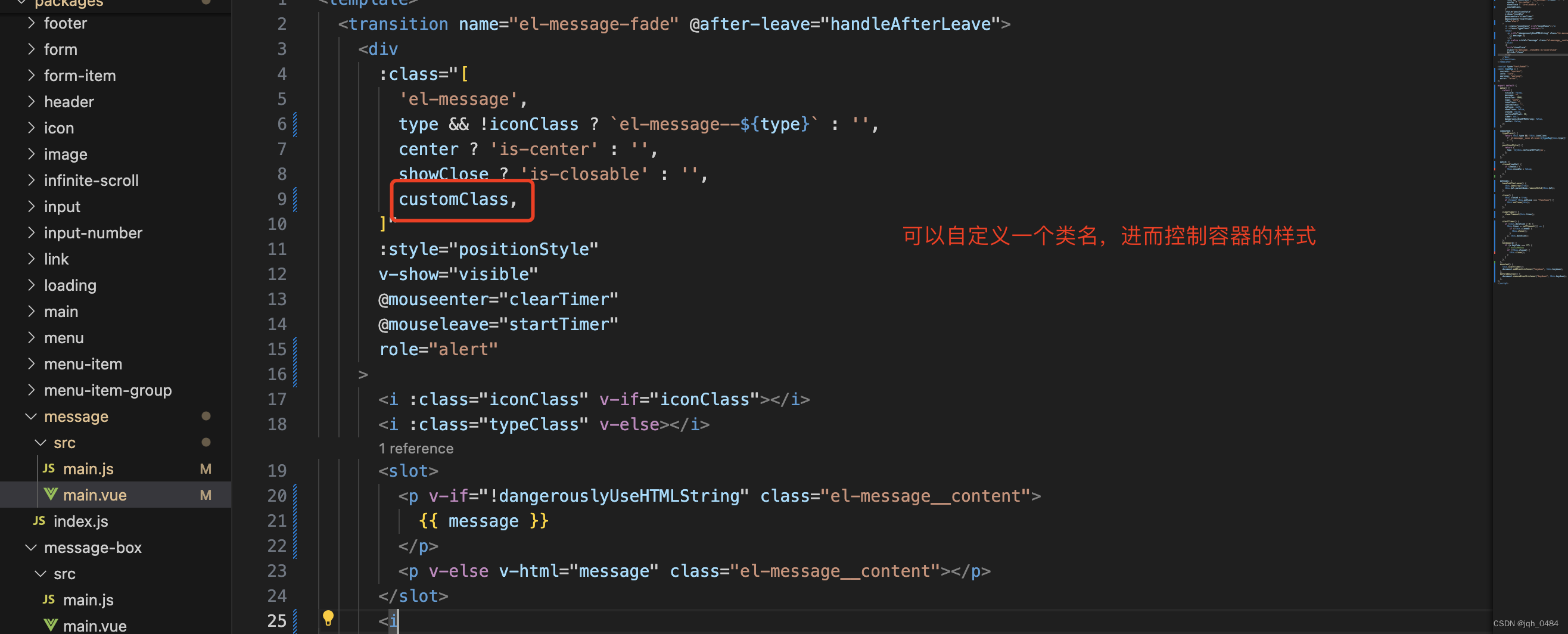
2.6 duration 属性,显示时间, 毫秒。设为 0 则不会自动关闭,类型 boolean,默认 false。
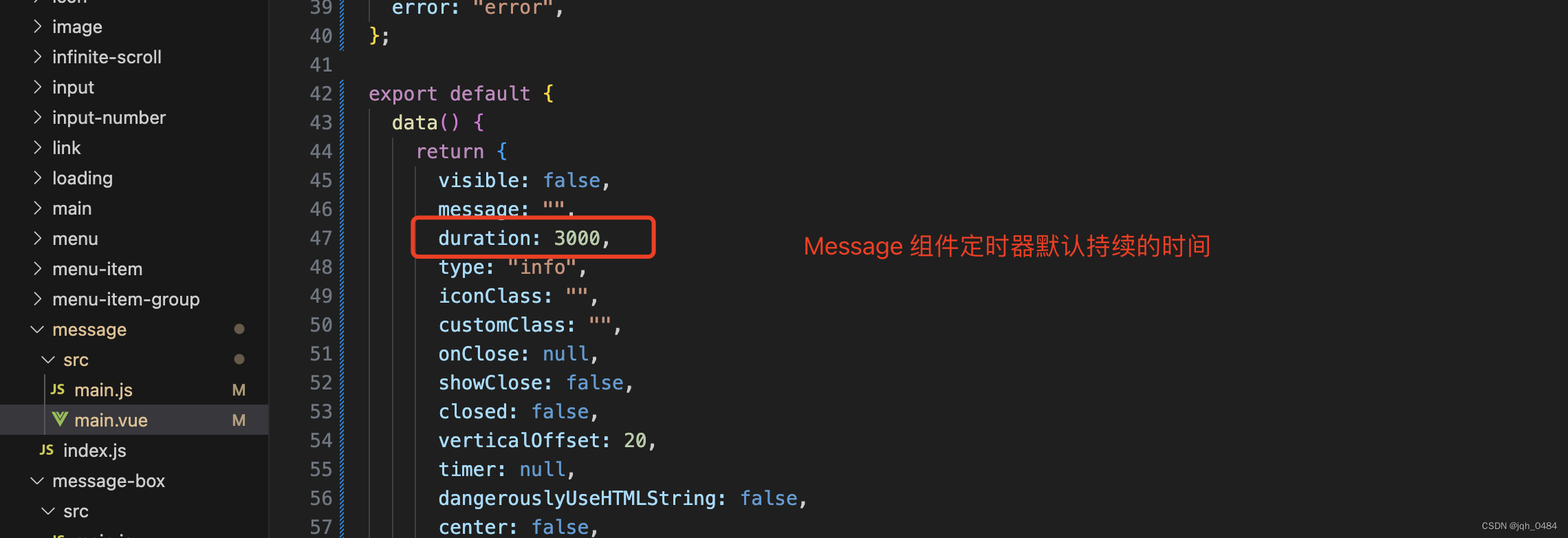

2.7 showClose 属性,是否显示关闭按钮,类型 boolean,默认 false。



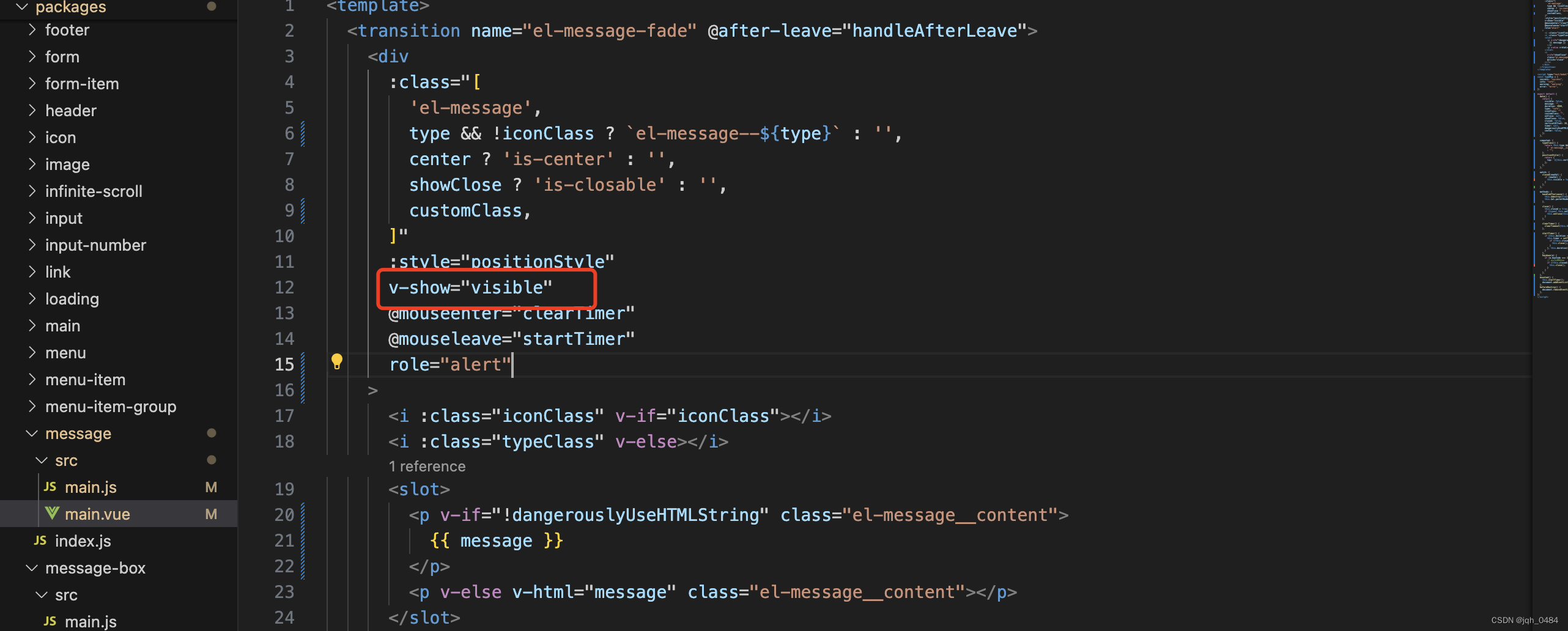
2.8 center 属性,文字是否居中,类型 boolean,默认 false。
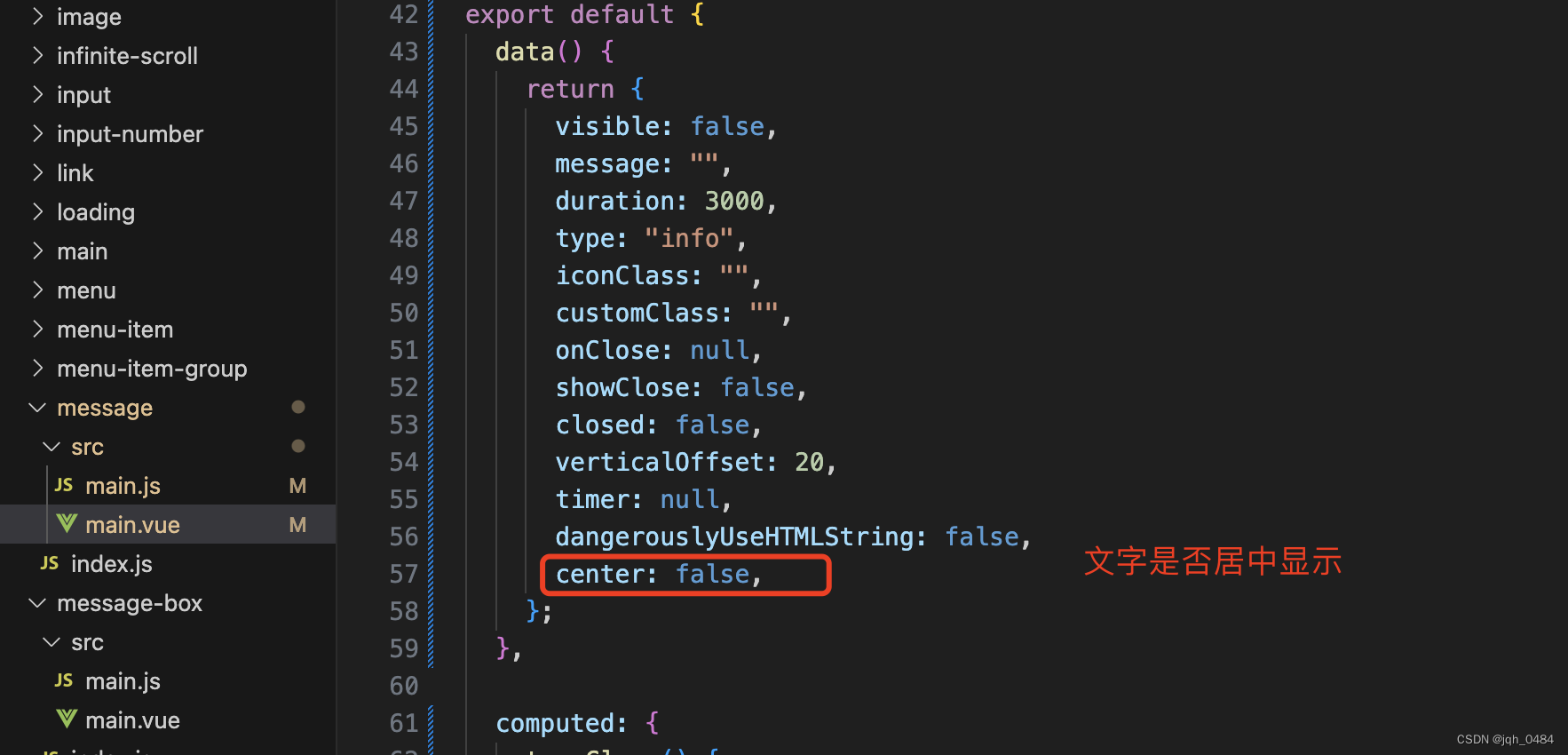
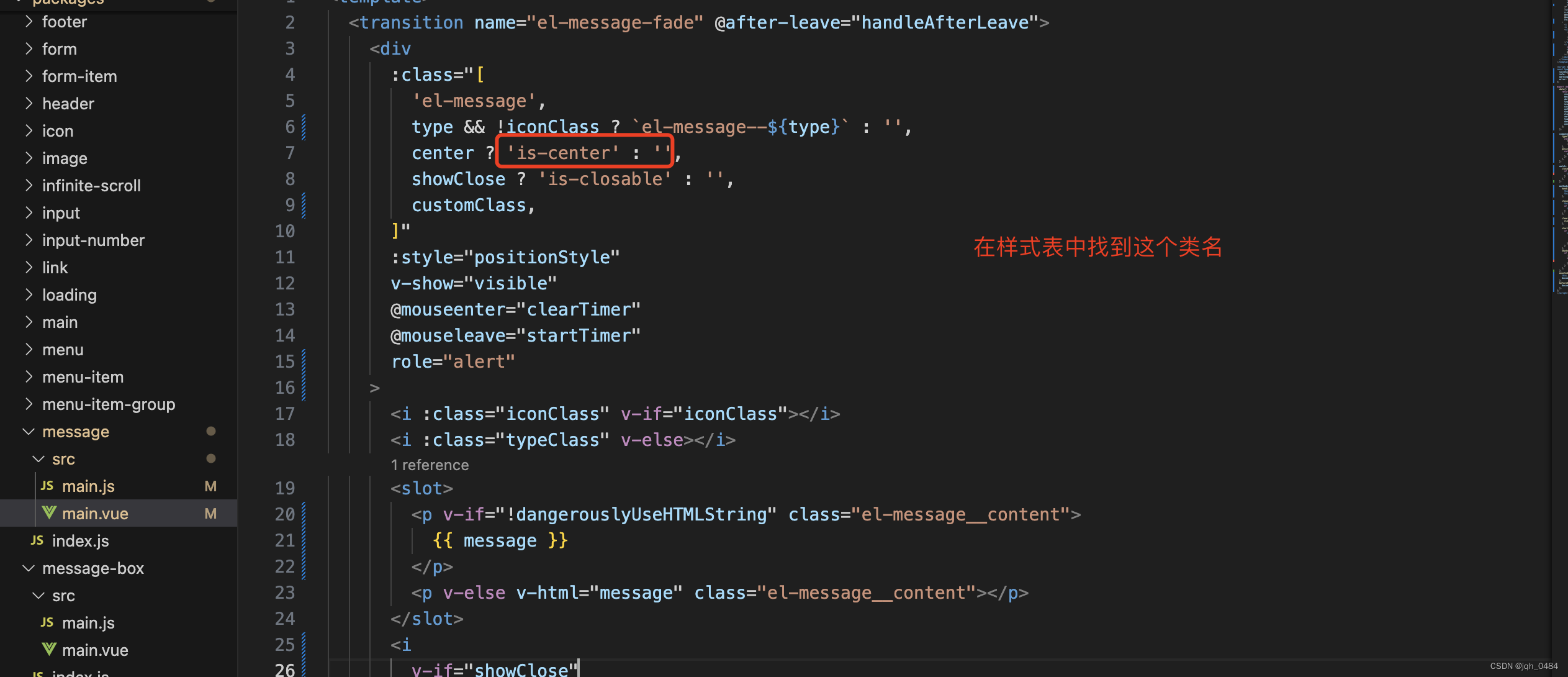

2.9 onClose 方法,关闭时的回调函数, 参数为被关闭的 message 实例,类型 function,无默认值。


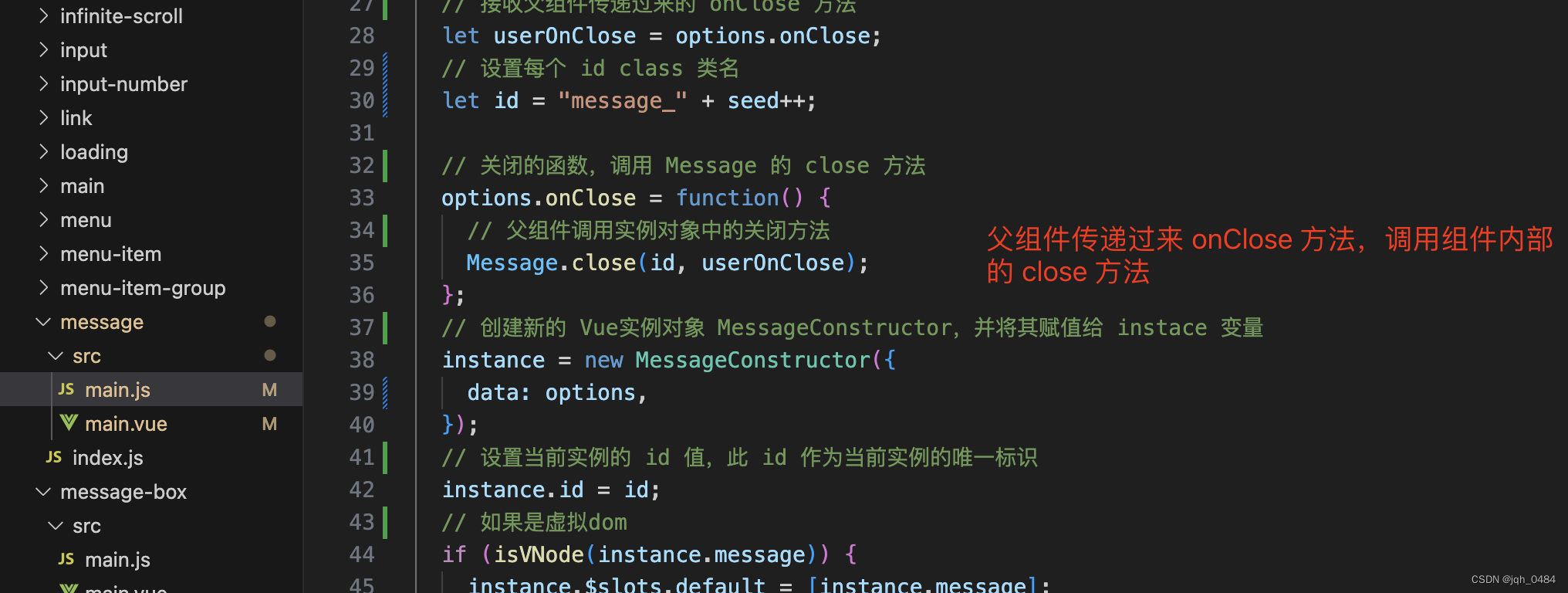

2.10 offset 属性,Message 距离窗口顶部的偏移量,类型 number,默认 20。
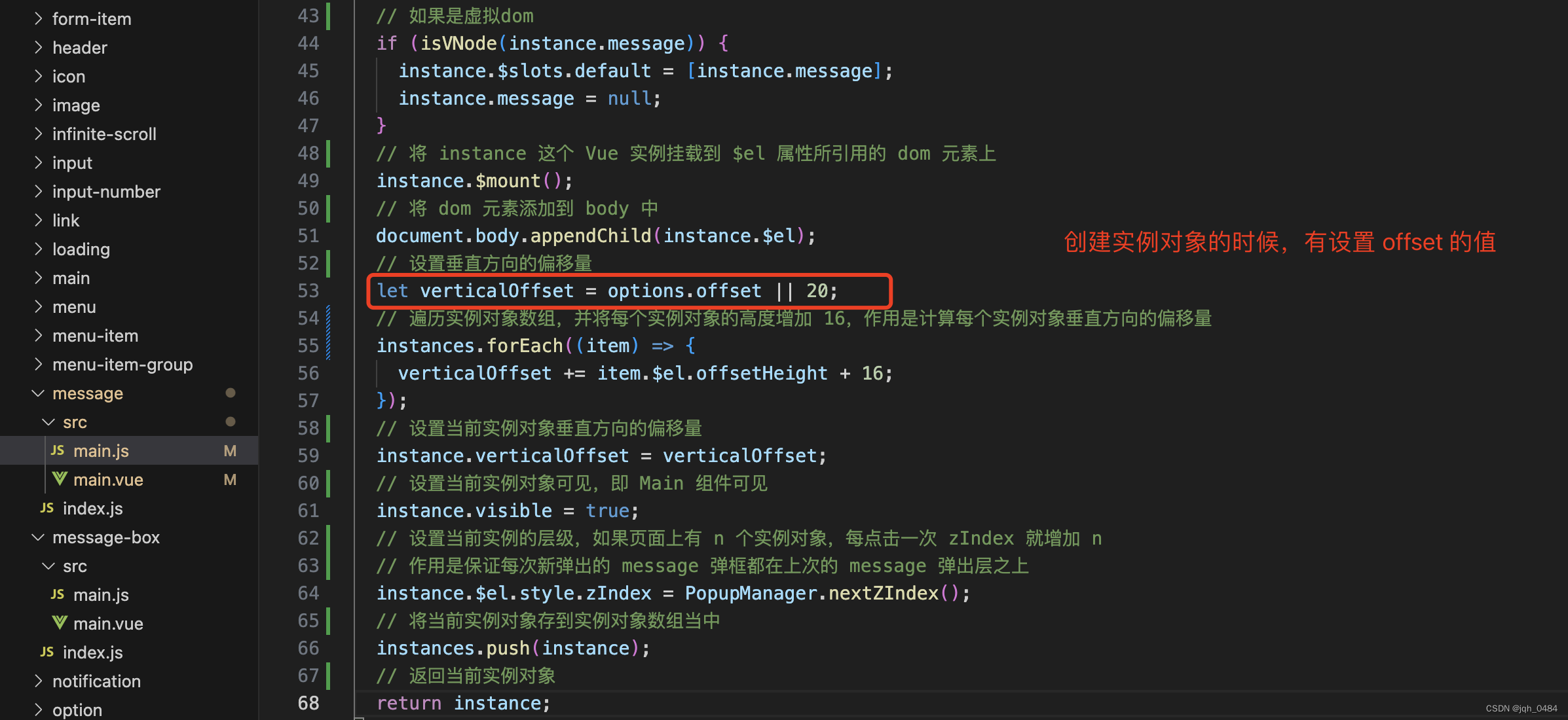

三、message 组件的方法
3.1 close 关闭当前的 Message。



close 方法使用的代码:

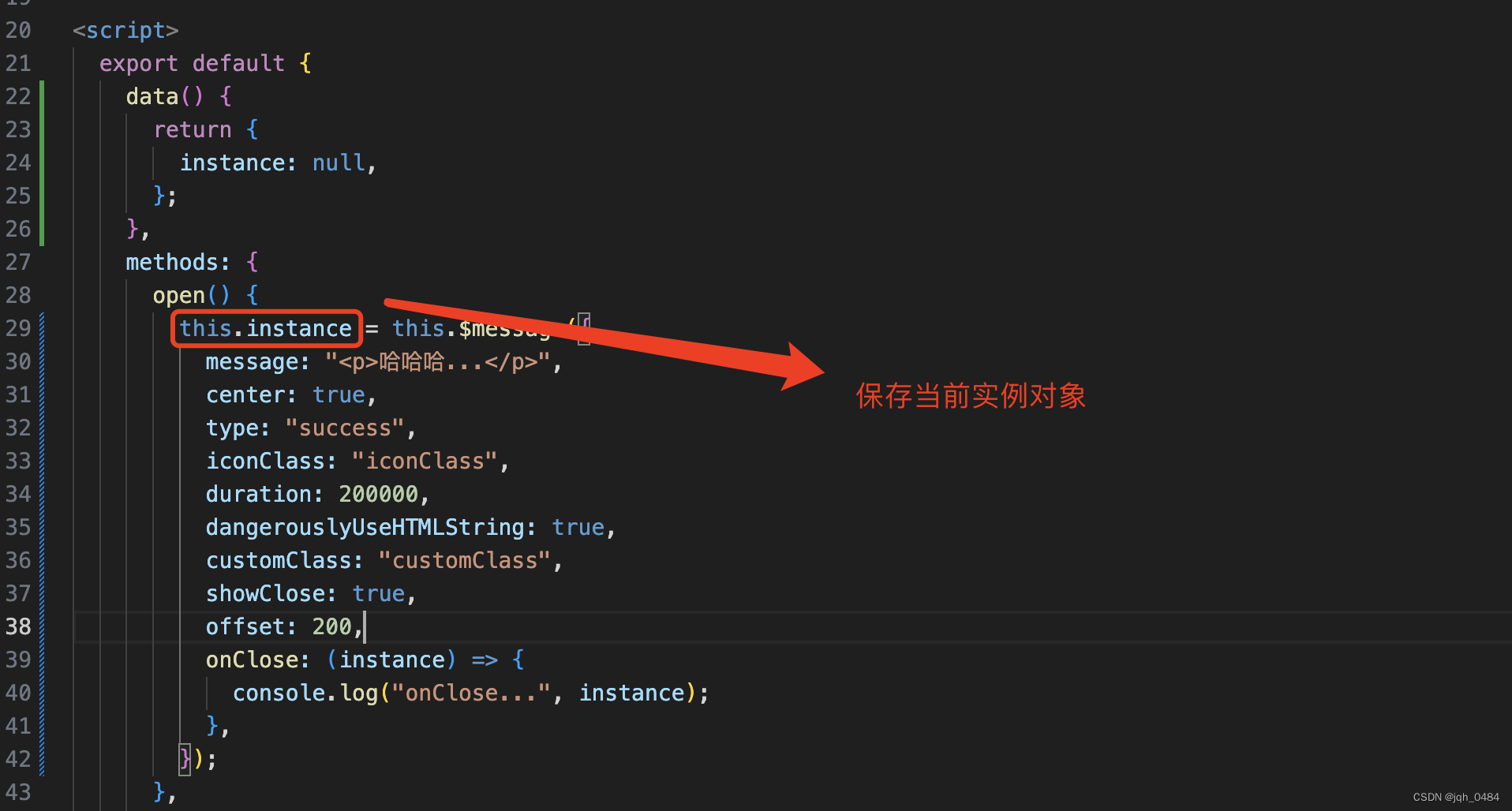

展示效果如下:

3.2 closeAll 手动关闭所有 Message。
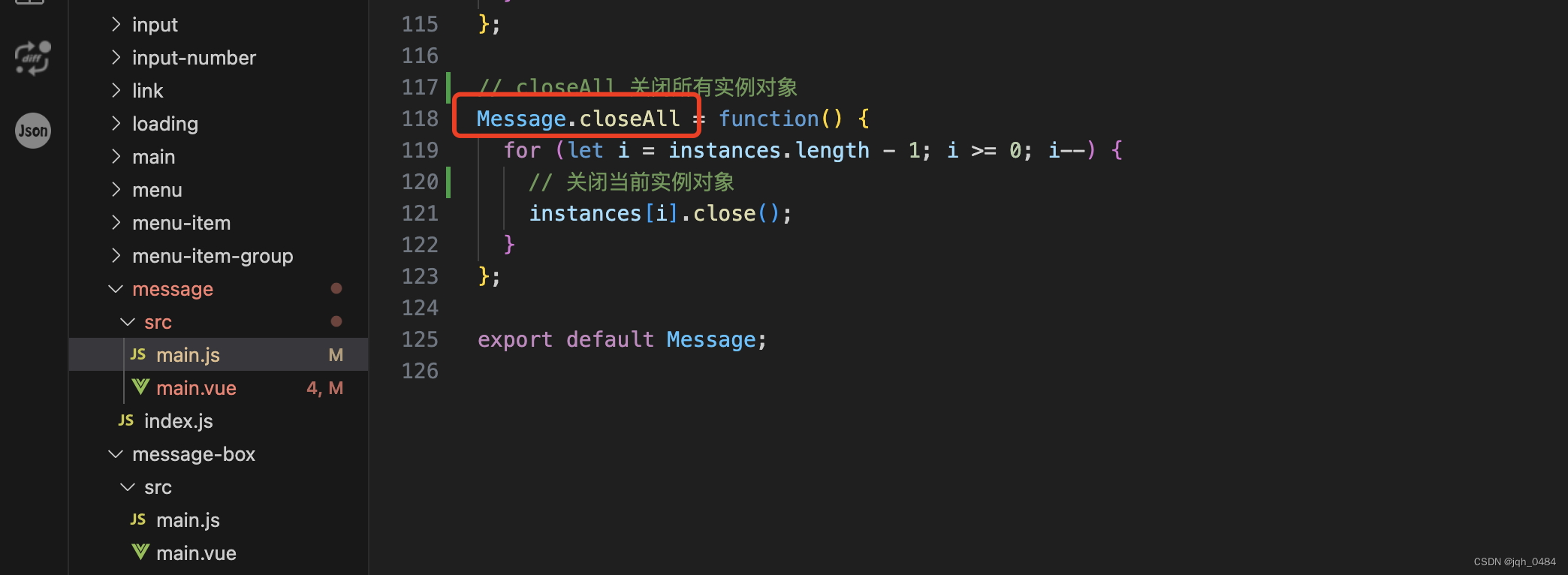
方法使用的代码如下:


展示效果如下:
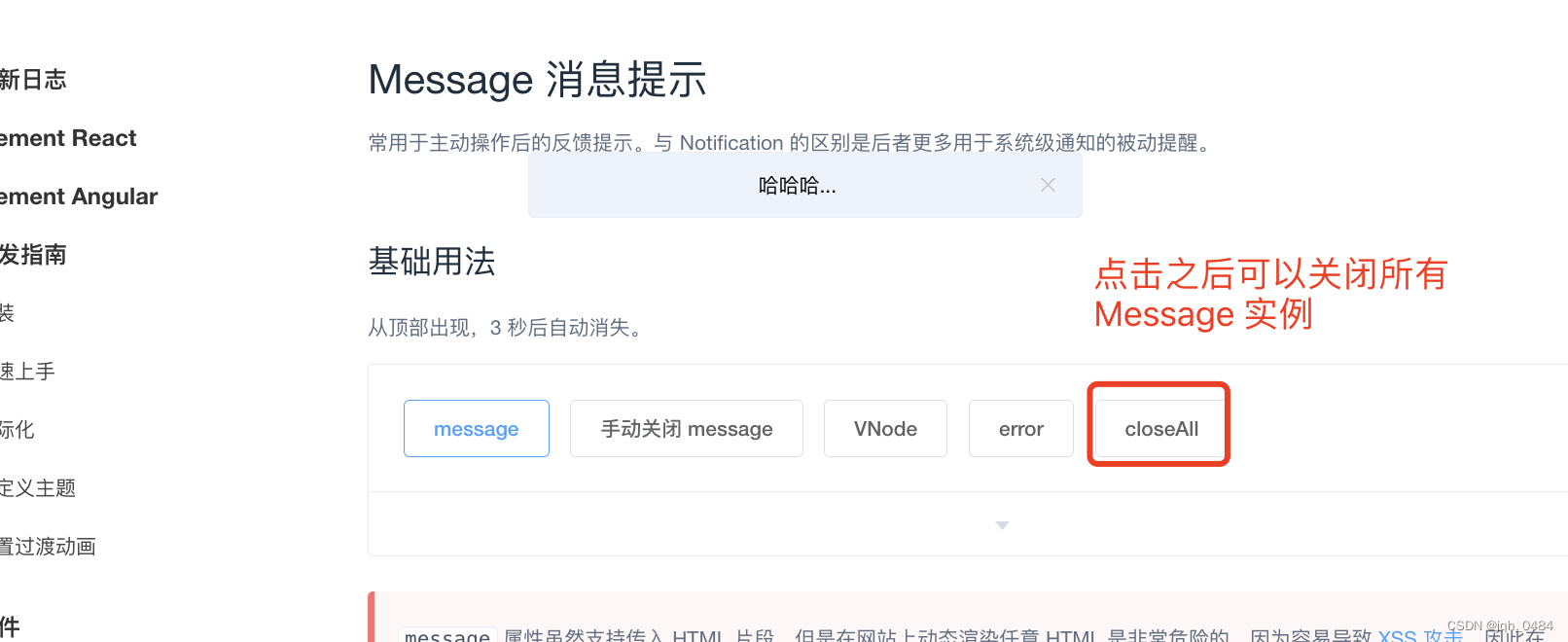
四、个人总结
第一次研究动态创建组件实例,有两个心得:
4.1 和模板中静态声明组件略有不同,核心点是使用 Vue.extend,创建可复用组件构造器。
4.2 动态创建组件灵活性高,主要表现在它是编程式的,可以很方便的进行手动调用,而模板创建的组件则更易于理解和维护,各有不同的使用场景。
更多【前端框架-element-ui message 组件源码分享】相关视频教程:www.yxfzedu.com
相关文章推荐
- 计算机视觉-计算机视觉与深度学习 | 基于视觉惯性紧耦合的SLAM后端优化算法 - 其他
- c++-【C++】从入门到精通第三弹——友元函数与静态类成员 - 其他
- spring boot-java 企业工程管理系统软件源码+Spring Cloud + Spring Boot +二次开发+ MybatisPlus + Redis - 其他
- 科技-企业财务数字化转型的机遇有哪些?_光点科技 - 其他
- 科技-云计算的大模型之争,亚马逊云科技落后了? - 其他
- c语言-C语言 变量 - 其他
- 物联网-USB PD v1.0快速充电通信原理 - 其他
- 网络-网络安全与TikTok:年轻一代的数字素养 - 其他
- 安全-安全防御——四、防火墙理论知识 - 其他
- 网络-网络安全和隐私保护技术 - 其他
- 安全-webgoat-Security Logging Failures安全日志记录失败 - 其他
- 笔记-【动手学深度学习】课程笔记 05-07 线性代数、矩阵计算和自动求导 - 其他
- 安全-水利部加快推进小型水库除险加固,大坝安全监测是重点 - 其他
- 微服务-Java版分布式微服务云开发架构 Spring Cloud+Spring Boot+Mybatis 电子招标采购系统功能清单 - 其他
- 开发语言-怎么学编程效率高,编程练习网站编程软件下载,中文编程开发语言工具下载 - 其他
- 安全-iPortal如何灵活设置用户名及密码的安全规则 - 其他
- 集成测试-如何使用 Loadgen 来简化 HTTP API 请求的集成测试 - 其他
- yolo-基于YOLOv8与DeepSORT实现多目标跟踪——算法与源码解析 - 其他
- 编程技术-【机器学习】Kmeans聚类算法 - 其他
- 集成学习-【Python机器学习】零基础掌握RandomForestRegressor集成学习 - 其他
2):严禁色情、血腥、暴力
3):严禁发布任何形式的广告贴
4):严禁发表关于中国的政治类话题
5):严格遵守中国互联网法律法规
6):有侵权,疑问可发邮件至service@yxfzedu.com
